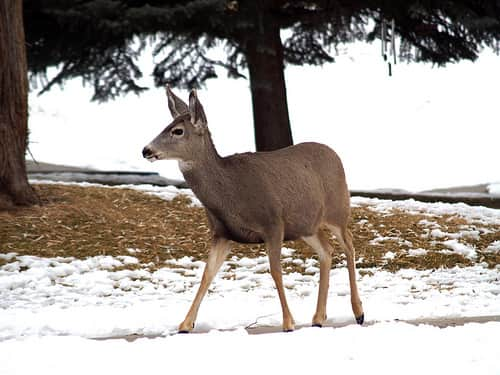Indiana Deer Harvest Down in 2011, But Still 4th Best
OutdoorHub 03.12.12

Indiana deer hunters bagged fewer deer during the 2011 season than the year before, but the 129,018 total was still the fourth-best season on record, according to a report from the Indiana Department of Natural Resources Division of Fish & Wildlife.
The total represented a 3.7 percent drop from the all-time record harvest of 134,004 in 2010. In the 60-year history of the state’s modern deer hunting era, hunters have bagged almost 2.99 million deer.
“It becomes somewhat predictable that the harvest would fall in line close to where it has the past couple of years,” said Chad Stewart, deer management biologist for the DNR Division of Fish & Wildlife. “It appears in some areas the deer population is in fact down, but those areas aren’t many. Overall, the deer herd is thriving in our state.”
The 2011 statewide harvest was still almost 5,500 deer above the 10-year average, and 64 counties registered totals that were higher than their 10-year annual averages.
“Though there are always a lot of complaints that come across my desk during and immediately after deer season from hunters who are not seeing the numbers they typically see, the decline of the Indiana deer herd is greatly exaggerated,” Stewart said. “Local populations in some areas may be down, but the state’s herd is overall abundant and healthy.”
Fourteen counties had record harvests: Boone (460), Crawford (1,925), Decatur (727), Floyd (712), Jennings (1,962), Marion (329), Montgomery (1,204), Randolph (667), Shelby (396), Sullivan (1,917), Vermillion (1,380), Vigo (1,507), Wabash (1,798), and White (1,233). It was the third straight record year for Boone and Sullivan, and the second straight for Jennings, Montgomery, Randolph, Shelby and Wabash.
Steuben County led the state for the seventh straight year with 3,532 deer reported. Switzerland County was second with 3,309, followed by Kosciusko (3,123), Noble (3,025), Dearborn (2,885), Franklin (2,876), Harrison (2,680), Washington (2,605), Parke (2,561) and LaGrange (2,523).
The deer hunting season began in urban zones on Sept. 15, followed by a two-day youth only weekend (Sept. 24-25) and then the early archery (Oct. 1-Nov. 27), firearm (Nov. 12-27), muzzleloader (Dec. 4-19) and late archery (Dec. 3-Jan. 1).
Hunters using muzzleloaders logged their third consecutive record year by bagging 33,571 deer in either the firearm or muzzleloader segments, including a record 19,235 in the muzzleloader segment. That was a 10.5 percent increase from the 2010 muzzleloader segment.
Hunters also harvested 79,717 deer in the firearm segment (down 7.5 percent from 2010); 26,021 in early archery (down 1 percent); 1,726 in late archery (up 2.5 percent); and 2,319 in the youth season (down 0.8 percent).
The early archery total includes deer taken in urban deer zones.
Weather may have been a factor in the lower overall harvest. The Indiana State Climate Office reported above normal temperatures 21 days in November 2011, with eight of those days being 10 degrees or more above normal, making it the ninth warmest November since 1895. It was also the third wettest November in history and the wettest in the past 26 years.
“Both of those can have an effect on not only deer movement in November but also hunter participation,” Stewart said. “It’s certainly one potential reasonable explanation for the smaller harvest during firearm season, which contributes a great deal to the overall harvest, but it’s impossible to say if the decreased harvest is a function of smaller deer populations in some areas or weather factors keeping hunters and deer at bay.”
Hunters purchased 276,398 deer licenses in 2011, the most since the DNR began its computerized point-of-sale license system in 2006. It was a 3 percent increase from 2010 (268,485 licenses). All categories showed increases from 2010, led by military/refuge licenses at 23.5 percent and muzzleloader 9 percent, plus a 5 percent increase in youth licenses.
“Indiana seems to be somewhat of an exception to the norm in that our hunters continue to come out and participate in hunting,” Stewart said. “This can’t be said for many other states that are seeing alarming declines in their hunter numbers.
“Whether it is the tradition that is ingrained in Indiana hunters or benefits seen from an emphasis on recruiting and retaining hunters within the state is hard to say, but something is working, and that is positive.”

